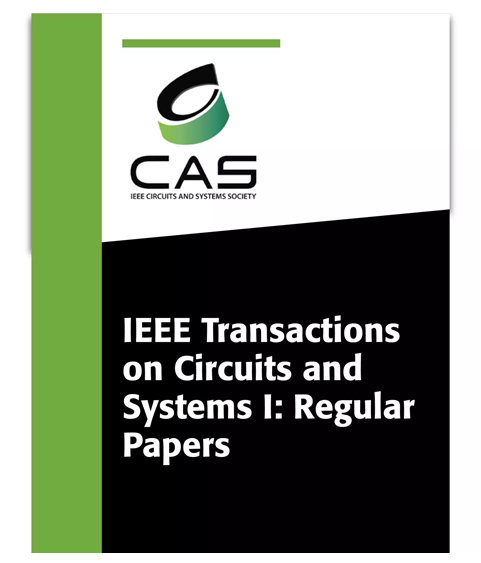采用可寻址多通道VCSEL发射机、128 × 80 SPAD传感器和基于ml的边缘计算目标检测的自适应波束导向dof激光雷达系统
IF 5.2
1区 工程技术
Q1 ENGINEERING, ELECTRICAL & ELECTRONIC
IEEE Transactions on Circuits and Systems I: Regular Papers
Pub Date : 2025-04-04
DOI:10.1109/TCSI.2025.3550450
引用次数: 0
摘要
在这项工作中,提出了一种固态直接飞行时间(dToF)和自适应光束导向光检测和测距(LiDAR)系统,用于基于机器学习(ML)的目标检测。为了充分利用软件和硬件的能力,实现了从基于神经网络的算法到发送、接收和光组件架构的协同优化设计。首先,针对仅深度输入算法,提出了一种目标检测神经网络,该算法在照明区域中显示感兴趣区域(ROI),并在接下来的两帧中给出打开扫描通道的提示,以降低激光驱动器和传感器阵列的总成本。其次,该网络利用Cross-Stage-Patrial (CSP)块取代骨干网中的残留结构,实现了轻量级性能,并在NVIDIA-Jetson上实现,验证了系统级自适应波束转向特性。为了实现智能工作模式,设计了定制的多通道可寻址TX,用于自适应和光控制,以节省功耗并延长测距距离。同时,由单光子雪崩二极管(spad)和列式时间-数字转换器(TDC)组成的128 × 80分辨率RX用于捕获返回的光子,将子区域组合成整个深度图。接下来,为了定制特定的扫描机制,对于光学设置,设计了一个圆柱形透镜阵列来重塑激光束,使其与发射器的模式相匹配,以照亮不同的目标物体。激光驱动芯片和传感器芯片均采用180 nm双极cmos - dmos (BCD)工艺制造,其SPAD阵列为128 × 80。最后,激光驱动芯片以1.5 ns的可调脉宽实现了5 W的功率,SPAD阵列在15 m处集成了5 cm的深度精度。由于神经网络实现了高达0.8的精度,因此展示了具有自适应光束导向的低功耗固态激光雷达原型。本文章由计算机程序翻译,如有差异,请以英文原文为准。
An Adaptive Beam-Steering dToF LiDAR System Using Addressable Multi-Channel VCSEL Transmitter, 128 × 80 SPAD Sensor, and ML-Based Edge-Computing Object Detection
In this work, a solid-state direct time-of-flight (dToF) and adaptive beam-steering Light Detection and Ranging (LiDAR) system is proposed for machine learning (ML) based object detection. To leverage the capabilities of software and hardware, a co-optimization design from a neural network based algorithm to the architecture of transmitter, receiver and optical components is realized. Firstly, an object detection neural network is proposed for the depth-only input algorithm, which indicates the Region of Interest (ROI) in the illuminating field and gives hints of opened scan channels in the next two frames to decrease the total cost of the laser driver and sensor array. Next, the proposed network utilizes the Cross-Stage-Patrial (CSP) block to replace the residual structure in the backbone to achieve a lightweight performance and is implemented on the NVIDIA-Jetson to verify the system-level adaptive beam steering feature. To realize the smart working mode, a customized multi-channel and addressable TX is designed for adaptive and optical control to save power consumption and extend the ranging distance. At the same time, a $128\times 80$ resolution RX which consists of Single-Photon Avalanche Diodes (SPADs) and column-wise Time-to-Digital Converter (TDC) is incorporated to capture the returned photons for combining sub-regions into an entire depth map. Next, to customize the specific scanning mechanism, for the optical setup, a cylindrical lens array is designed to reshape the laser beam, which matches the pattern of the transmitter to illuminate different targeted objects. Both the laser driver chip and the sensor chip with a $128\times 80$ SPAD array are fabricated in the 180-nm Bipolar-CMOS-DMOS (BCD) process. Finally, the laser driver chip realizes the power of 5 W with an adjustable pulse width of 1.5 ns and the SPAD array integrates the depth accuracy of 5 cm at 15 m. Due to that the neural network realizes an accuracy up to 0.8, a low-power solid-state LiDAR prototype with adaptive beam steering is demonstrated.
求助全文
通过发布文献求助,成功后即可免费获取论文全文。
去求助
来源期刊
CiteScore
9.80
自引率
11.80%
发文量
441
审稿时长
2 months
期刊介绍:
TCAS I publishes regular papers in the field specified by the theory, analysis, design, and practical implementations of circuits, and the application of circuit techniques to systems and to signal processing. Included is the whole spectrum from basic scientific theory to industrial applications. The field of interest covered includes: - Circuits: Analog, Digital and Mixed Signal Circuits and Systems - Nonlinear Circuits and Systems, Integrated Sensors, MEMS and Systems on Chip, Nanoscale Circuits and Systems, Optoelectronic - Circuits and Systems, Power Electronics and Systems - Software for Analog-and-Logic Circuits and Systems - Control aspects of Circuits and Systems.

 求助内容:
求助内容: 应助结果提醒方式:
应助结果提醒方式:


